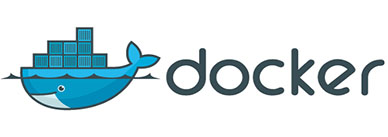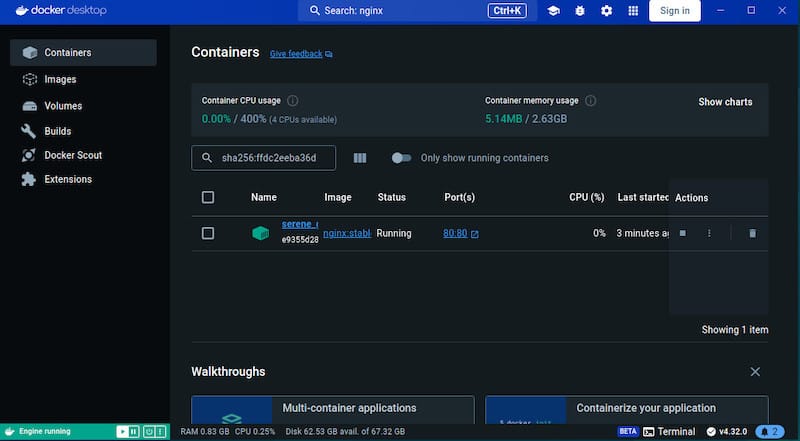How To Install Docker Desktop on Linux Mint 22

Docker has revolutionized the world of containerization, enabling developers to package applications and their dependencies into portable, lightweight containers. Docker Desktop is a powerful tool that simplifies the management of Docker containers on various operating systems, including Linux Mint 22. In this comprehensive guide, we will walk you through the step-by-step process of installing Docker Desktop on Linux Mint 22, empowering you to leverage the full potential of containerization technology.
System Requirements
Before diving into the installation process, it’s crucial to ensure that your Linux Mint 22 system meets the necessary hardware and software prerequisites. Docker Desktop requires a 64-bit kernel and a CPU with virtualization support to function optimally. A minimum of 4 GB of RAM is recommended for smooth performance. Additionally, your system should have KVM virtualization support and QEMU version 5.2 or newer installed. Lastly, make sure your desktop environment includes system tray support for easy access to Docker Desktop.
Preparing Your System
Checking Virtualization Support
To verify if your Linux Mint 22 system supports virtualization, you can use the kvm-ok command. Open a terminal and run the following command:
sudo apt install cpu-checker
kvm-okIf the output indicates that KVM acceleration can be used, you’re good to go. Otherwise, you may need to enable virtualization support in your system’s BIOS settings.
Updating System Packages
Before proceeding with the Docker Desktop installation, it’s important to update your system packages to ensure you have the latest versions. Open a terminal and run the following commands:
sudo apt update
sudo apt upgradeStep-by-Step Installation Guide
Step 1: Add Docker Repository
To install Docker Desktop on Linux Mint 22, you first need to add Docker’s official GPG key and repository to your system. Follow these steps:
1. Update the apt package index:
sudo apt-get update2. Install the necessary packages to allow apt to use a repository over HTTPS:
sudo apt-get install ca-certificates curl gnupg lsb-release3. Add Docker’s official GPG key:
curl -fsSL https://download.docker.com/linux/ubuntu/gpg | sudo gpg --dearmor -o /etc/apt/keyrings/docker.gpg4. Set up the Docker repository:
echo "deb [arch=$(dpkg --print-architecture) signed-by=/etc/apt/keyrings/docker.gpg] https://download.docker.com/linux/ubuntu $(lsb_release -cs) stable" | sudo tee /etc/apt/sources.list.d/docker.list > /dev/nullStep 2: Download Docker Desktop Package
Now that you have added the Docker repository, you can download the Docker Desktop DEB package from the official Docker website. Visit the following URL in your web browser.
Scroll down to the “Linux” section and click on the “DEB” download link. Save the DEB package to a convenient location on your Linux Mint 22 system.
Step 3: Install Docker Desktop
With the Docker Desktop DEB package downloaded, you can now proceed with the installation. Open a terminal and navigate to the directory where you saved the DEB package. Then, run the following commands:
1. Update the apt package index:
sudo apt update2. Install Docker Desktop using the downloaded DEB package (replace docker-desktop-amd64.deb with the actual filename if different):
sudo apt install ./docker-desktop-amd64.debThe installation process will start, and apt will resolve any dependencies required by Docker Desktop. Once the installation is complete, you will see a success message in the terminal.
Step 4: Post-installation Steps
After successfully installing Docker Desktop on Linux Mint 22, you can launch it from the applications menu. Look for the Docker Desktop icon and click on it to start the application.
Upon launching Docker Desktop for the first time, you will be prompted to accept the Docker Subscription Service Agreement. Read through the agreement and click on the “Accept” button to proceed.
Docker Desktop will then start initializing and setting up the necessary components. This process may take a few moments, so be patient. Once the initialization is complete, you will see the Docker Desktop interface, indicating that you are ready to start working with containers.

Using Docker Desktop
Now that you have Docker Desktop up and running on your Linux Mint 22 system, let’s explore how to use it effectively. The Docker Desktop interface provides a user-friendly way to manage your containers, images, and more.
To run your first container using Docker Desktop, follow these steps:
- Click on the “Containers” tab in the left sidebar of the Docker Desktop interface.
- Click on the “Create” button in the top-right corner to create a new container.
- Provide a name for your container and specify the image you want to use. You can either use an existing image or pull one from a container registry like Docker Hub.
- Configure any additional settings, such as port mappings or environment variables, based on your requirements.
- Click on the “Create” button to create and start the container.
Docker Desktop provides a range of features and functionalities to simplify container management. You can easily start, stop, and remove containers, view container logs, and access container terminals directly from the interface.
Troubleshooting Common Issues
While the installation process of Docker Desktop on Linux Mint 22 is generally straightforward, you may encounter some common issues. Here are a few troubleshooting tips to help you resolve them:
- Unmet dependencies: If you encounter errors related to unmet dependencies during the installation, ensure that you have updated your system packages and have the necessary repositories enabled.
- Permission denied errors: If you face permission-related errors while running Docker commands, make sure your user is added to the
dockergroup. You can add your user to the group by running the following command:
sudo usermod -aG docker $USER- Docker daemon not running: If Docker Desktop fails to start or you encounter issues related to the Docker daemon, try restarting the Docker service using the following command:
sudo systemctl restart dockerCongratulations! You have successfully installed Docker Desktop. Thanks for using this tutorial to install the latest version of Linux Mint 22. For additional help or useful information, we recommend you check the official Docker website.